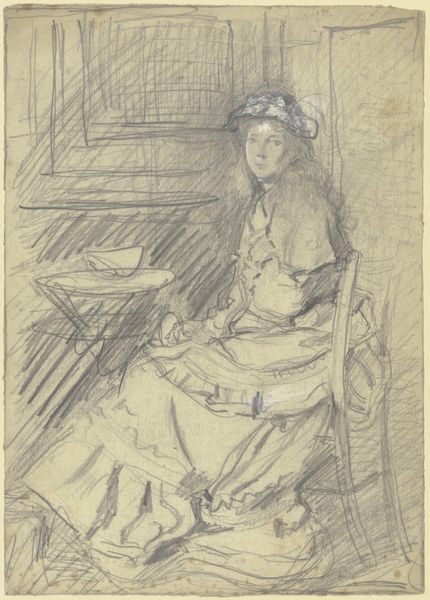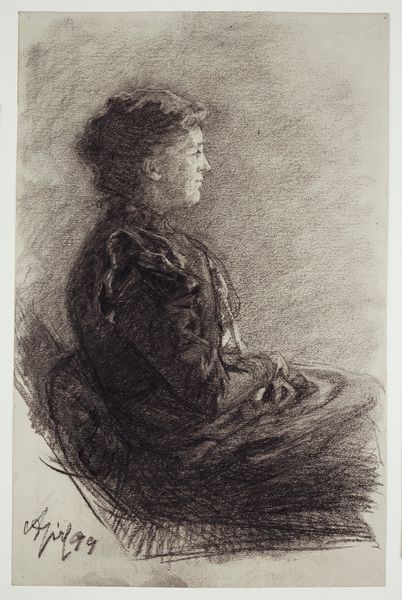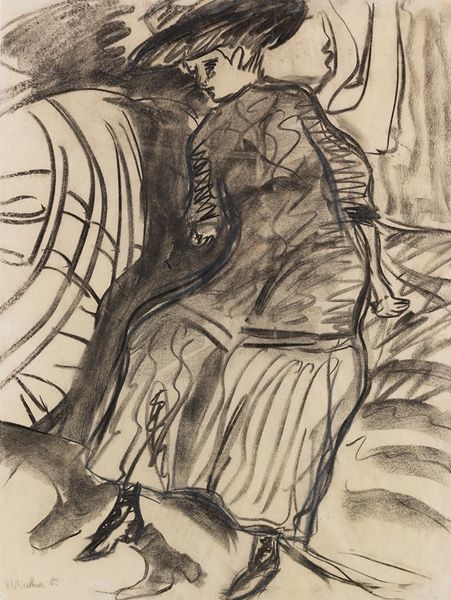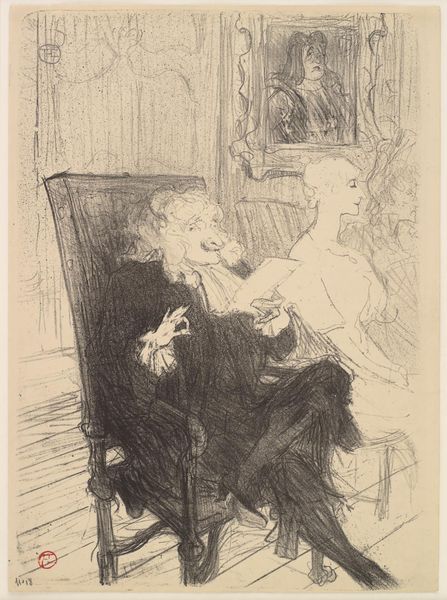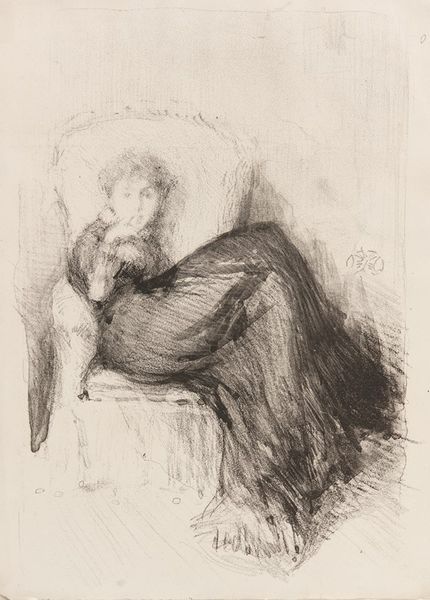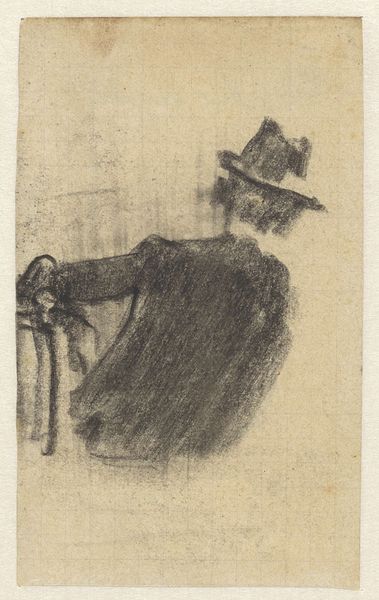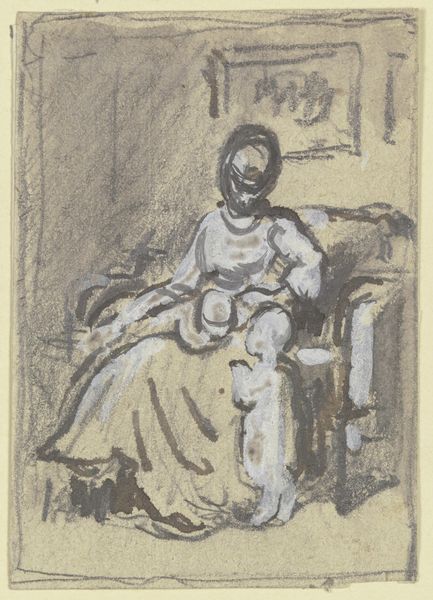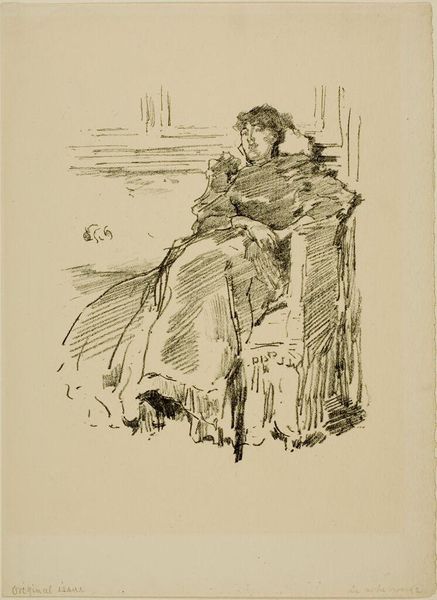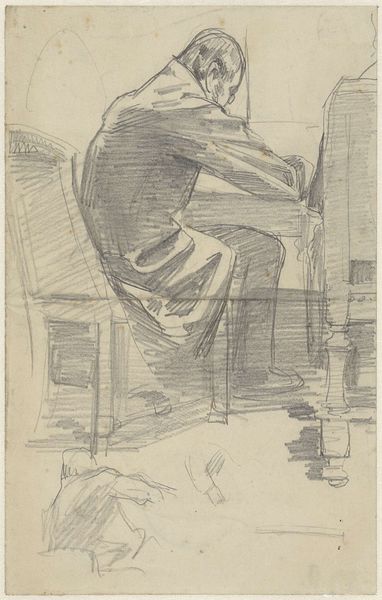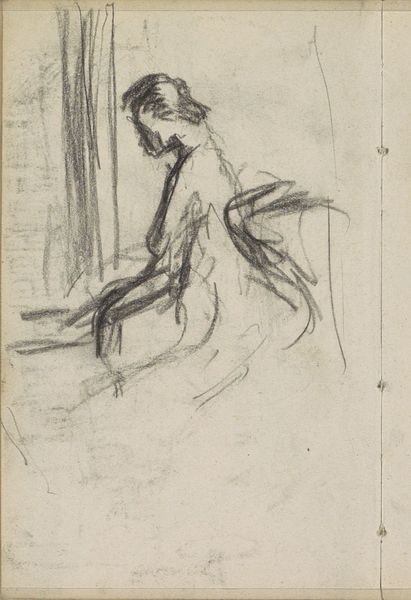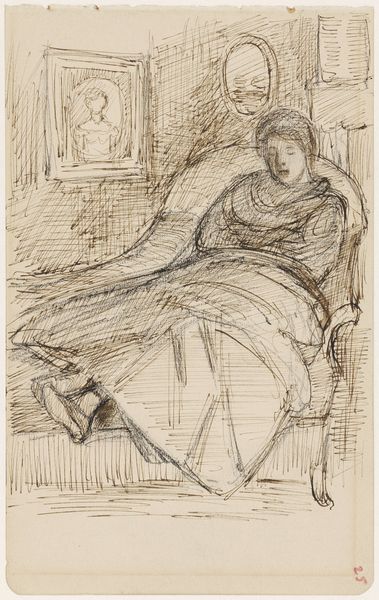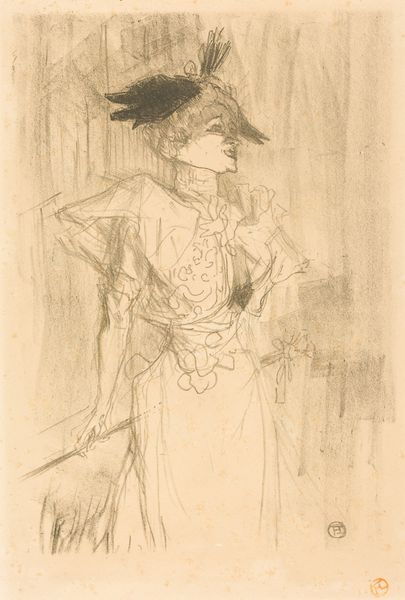
drawing, impasto, pencil
#
portrait
#
drawing
#
figuration
#
impasto
#
pencil
#
realism
Copyright: Public Domain: Artvee
Curator: Initially, I'm struck by the somber mood of this drawing, almost as if she is consumed by her inner thoughts. Editor: Yes, and the shading is superb. We're looking at William James Glackens' "Seated Woman", likely crafted around 1902. It’s a striking pencil drawing, full of texture, that immediately connects us with a bygone era. The impasto technique is subtly employed. Glackens situates her within a comfortable, yet somewhat confining, domestic space. It speaks to the restricted roles of women during the turn of the century. Curator: The hat casts a shadow over her face. Hats were potent symbols of status for women at that time. She has a worldy presence, doesn’t she? A little hidden maybe, constrained but defiant in spirit. Editor: I see it too, but note how her hands are delicately posed. The image almost evokes a protective gesture, her form shrouded, subtly obscuring her inner world from public scrutiny. The composition recalls some late 19th century portraiture; it feels almost a dream or like a cultural memory—repressed yet potent. Curator: Certainly. Glackens was known for his realist style, which offers us a glimpse into the social strata of his time. I think her posture expresses that, her face averted perhaps signifies resistance to societal norms or a certain disillusionment. It's fascinating how Glackens’ strokes create a sense of psychological depth. Editor: Exactly! There is also a hidden visual language. The contrast between the lit and shadowed parts of her form seems emblematic of an inner tension, don’t you think? I feel her presence almost a challenge: how to unveil or access this enigmatic figure? Curator: Perhaps that ambiguity is the point. We are invited to project our interpretations and relate to the woman based on our contemporary understandings of femininity and representation. Ultimately, she serves as a signifier of historical suppression. Editor: Agreed, Glackens succeeds in portraying an enigmatic character. By using symbolic details he sparks within us an endless interpretive cycle, allowing cultural memories to take form.
Comments
No comments
Be the first to comment and join the conversation on the ultimate creative platform.
